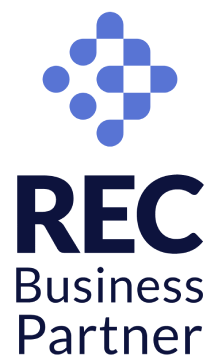This blog explores the ways AI powered pulse surveying can help UK higher education institutions to gain insights and build employee engagement strategies to combat their most pressing challenges.
By regularly listening to employees through live anonymous surveys, reviewing the feedback analysis and taking targeted actions, HEIs can build an ongoing people strategy that remains highly responsive to employee needs.
We’ll go through eight objectives most HEIs in the UK are trying to achieve right now:
- Protecting faculty members against the adverse effects of funding cuts
- Competing with international institutions
- Balancing engagement disparities between junior and senior employees
- Meeting different needs across roles
- Developing highly effective change management strategies
- Nurturing line communication
- Improving ED&I continuously
- Providing a better student experience overall
Protecting faculty members against the adverse effects of funding cuts
Funding cuts have the potential to negatively impact engagement areas like morale, job security, and managing workloads. Rather than making assumptions, institutions benefit from direct insights into how employees are being affected across specific roles and departments.
Understanding the precise effects of cuts enables leadership to take appropriate mitigating actions, whether that involves workload adjustments, internal funding reallocation, or lobbying for policy changes with supporting evidence.
Regular pulse surveys give faculty members a confidential voice to share their experiences and concerns stemming from funding changes. AI analysis also detects sentiment shifts that act as early warning signs of declining engagement.
Armed with data, institutions can act preemptively to safeguard their employees and minimise adverse effects.
Competing with international institutions
To compete with international institutions (attracting and retaining gifted faculty members) institutions should take stock of what employees value most on a continuous basis. Gathering real-time insights allows colleges and universities to pinpoint areas for improvement and rapidly implement changes.
The time taken by an institution to respond to employees’ engagement needs is crucial for retention, particularly in periods of intense change – be they within the institution, the wider economy, the global consciousness, or wherever else.
Balancing engagement disparities between junior and senior employees
Where engagement disparities exist between junior and senior faculty members (generally most prevalent in regard to tenure status), giving equal voice to all employees through regular anonymous surveys is in itself a first step to bridging the gap.
Institutions can then spot the variances in certain areas of engagement across tenure status and length of service (within whichever roles or departments) providing a jumping-off point for targeted action. AI then allows institutions to track the effectiveness of actions taken to correct engagement differences.
AI sentiment analysis also allows institutions to view common talking points amongst tenure and non-tenure employees, easily revealing any feelings of inequity. Custom surveys can also be sent to individual demographics to make more direct enquiries about how employee groups view the way they’re treated comparatively.
Meeting different needs across roles
There are always going to be differences in the needs of the academic team and the professional team which have a knock-on effect on engagement depending on how they are addressed.
Continuous surveys and AI analysis allow institutions to build a hyper-nuanced people strategy with tailored initiatives for specific groups. Crucially, this method is quicker and more effective than creating initiatives that compromise on engagement across roles.
Developing highly effective change management strategies
Change management efforts can be streamlined through custom surveys scheduled to coincide with initiatives in the pipeline. Real-time feedback on employees’ reactions before, during and after the initiative allows leadership to course-correct in the moment, helping employees to feel heard and facilitating a culture that embraces change.
Nurturing line communication
Line communication, particularly within larger institutions, is vital not just for efficiency but for the quality of relationships across hierarchy levels.
Miscommunications are particularly damaging to employee engagement when not amended; regular live feedback allows your senior leadership team to spot instances of communication gone awry so they can be corrected immediately. This prevents any breakdowns in trust and strengthens faith in management.
Improving ED&I continuously
Institutions that gather live data on inclusivity continuously across demographics can build on their culture by making measurable changes throughout the year. Bolstering inclusivity within the faculty naturally breeds a more inclusive learning environment for students to benefit from. (Continuous, live ED&I surveys are delivered exclusively by Wotter.)
Regular questions to give institutions their iNPS score (inclusivity Net Promoter Score) provide an overall measure of how inclusive employees deem the organisation to be, giving institutions further insight into their competitiveness as an employer.
Providing a better student experience overall
The quality of a student’s education depends largely on their learning environment and how engaged their teachers and supporting staff are. Regular feedback coupled with a holistic approach to improving engagement across the entire faculty seeps through into the student body, helping to create the next generation of brilliant, engaged minds.
The Wotter platform
We’re proud to say that Wotter has recently been ranked number 1 on the APUC (Advanced Procurement for Universities & Colleges) staff engagement survey framework. To see whether Wotter could benefit your institution, take a look at the Wotter Dashboard or our Employee App, where you can see more about the features mentioned in this blog – and several more.
Want to have a conversation with us or book a demo? Head over here.




